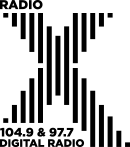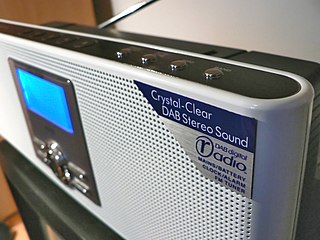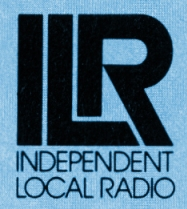Licensed radio broadcasting in Ireland is one element of the wider media of Ireland, with 85% of the population listening to a licensed radio broadcasting service on any given day.

Kiss is a British digital radio station owned and operated by Bauer Media Audio UK as part of the Kiss Network.

Heart 96.3 was an Independent Local Radio station serving Bristol and surrounding areas and broadcasting on 96.3 MHz in Bristol and Weston-super-Mare. Launched in 1981 as Radio West, it was merged with neighbouring Wiltshire Radio and relaunched under the name GWR in 1985, retaining the name through several changes of ownership until rebranding in March 2009. Heart Bristol merged with sister stations in Somerset and Bath to form Heart West Country.
Minster FM was an Independent Local Radio station serving York and the surrounding areas such as Selby, Tadcaster, Thirsk, Northallerton and Goole. The station closed on 31 August 2020 and its frequency is now a relay of Greatest Hits Radio Yorkshire. It broadcast on 104.7 FM from the Acklam Wold transmitter, near Leavening, on the Yorkshire Wolds.
A UK Restricted Service Licence is typically granted to radio stations and television stations broadcasting within the UK to serve a local community or a special event. Licences are granted by the broadcasting authority Ofcom.

Radio X is a British national commercial radio station focused on alternative music, primarily indie rock, and owned by Global. The station launched in 1989 as a pirate radio station named Q102, before being renamed Xfm in 1992. The station became a legally licensed London-wide station in 1997, and in 2015 began national broadcasting under the name Radio X.
Digital One is a national commercial digital radio multiplex in the United Kingdom, owned by Arqiva. As of March 2010, the multiplex covered more than 90% of the population from 137 transmitters. Coverage was extended to Northern Ireland in July 2013. It contains a list of DAB and DAB+ radio stations operated by Bauer Media Audio UK, Global and News Broadcasting.
Radio enjoys a huge following in the United Kingdom. There are around 600 licensed radio stations in the country. For a more comprehensive list see List of radio stations in the United Kingdom.
Radio Clyde is a group of two Independent Local Radio stations serving Glasgow and West Central Scotland. Radio Clyde is owned and operated by Bauer, based at studios in Clydebank, West Dunbartonshire and forms part of Bauer's Hits Radio and Greatest Hits Radio Network of local stations.
Independent National Radio (INR) is the official term for the three national commercial radio stations currently or previously broadcasting on analogue radio in the United Kingdom, beginning in 1992. One station was allocated an FM licence, and the other two were allocated AM medium wave frequencies previously used by BBC Radio 3 and BBC Radio 1.

In the United Kingdom, the roll-out of digital radio has been proceeding since engineering test transmissions were started by the BBC in 1990 followed by a public launch in September 1995. The UK currently has one of the world's biggest digital radio networks, with about 500 transmitters, three national DAB ensembles, one regional DAB ensemble, 48 local DAB ensembles and an increasing number of small-scale DAB ensembles broadcasting over 250 commercial and 34 BBC radio stations across the UK. In London there are already more than 100 different digital stations available. In addition to DAB and DAB+, radio stations are also broadcast on digital television platform as well as internet radio in the UK. Digital radio ensemble operators and stations need a broadcasting licence from the UK's media regulator Ofcom to broadcast.
In the United Kingdom, community radio refers to a system of licensing small, micro-local, non-profit radio stations, which started in 2002. In its early days, the pilot scheme was known as access radio. New legislation paved the way for this additional tier of radio, starting in 2005, and hundreds of community stations have since been set up. Unlike commercial radio licensing, which is generally advertised to cover a specific region, community radio stations are usually limited to broadcast areas smaller than commercial or BBC local stations, nominally within a 5 kilometres (3.1 mi) radius of their transmitter.

Smooth Wales is an Independent Local Radio station broadcasting to the Cardiff area of South Wales and to the Wrexham area of North Wales, as well as parts of Cheshire in England. All programming content is now shared to both areas. It is the only AM station in the Smooth radio network to have its own content, a local four-hour weekday show, as all other Smooth AM stations, as added to the network in 2014, carry the London network FM content, opting out only for local news and advertising breaks. The local show on Smooth Wales was carried over from the station's previous incarnation as Gold.
QUAY-FM is a VHF-FM broadcasting station on the island of Alderney. It holds the only Community Radio licence in the Channel Islands which was granted in February 2014 to the Alderney Broadcasting Company.
Incremental Radio was a new type of radio licence given out by the IBA in the United Kingdom between 1989 and 1990. In essence, these were additional radio services introduced into areas already served by an ILR station.
This is a timeline of the development of independent radio in the UK.
This is a list of notable events in the timeline of digital audio broadcasting in the UK.
This is a timeline of the development of radio in London.
This is a timeline of the development of radio in Wales.





